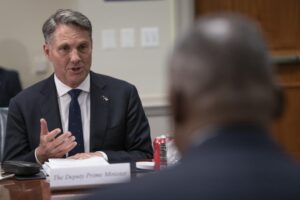
Australia’s defense minister this week said he hopes the AUKUS agreement will help break barriers to create a “seamless” defense industrial base among the U.S., U.K. and Australia as they work to help Australia develop a new nuclear-powered attack submarine. In meetings with U.S. officials “we've been specifically talking about how we can have our defense industrial bases operate in a more seamless way. And, again, we've been met with really good responses in respect to that,” Deputy Prime Minister…

 By
By 











